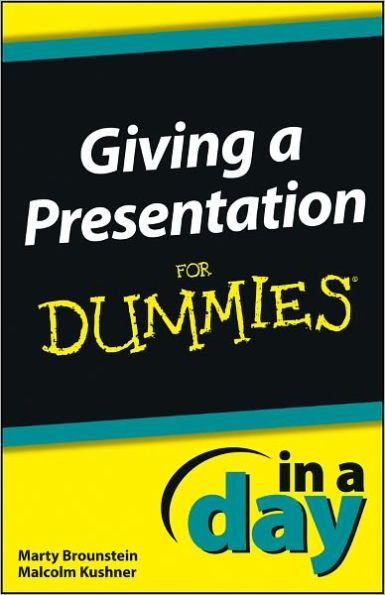Table of Contents
Introduction 1
What You Can Do In A Day 1
Foolish Assumptions 2
Icons Used in This Book 2
Chapter 1: Preparing to Deliver a Great Presentation 3
Hitting the Essentials of Effective Presentations 4
What makes a presentation 4
What breaks a presentation 6
Preparing the Presentation 8
Timing for Maximum Impact 10
Making your presentation time out just right 10
Filling time or trimming back 11
Chapter 2: Overcoming Stage Fright 13
Changing Your Perceptions 14
Realizing how your audience really feels 14
Visualizing success like a pro 15
Talking yourself into a great speech 16
Transforming Terrified to Terrific 17
Discovering stress-busting exercises 17
Discovering the real secret: Don’t look nervous 18
Preventing and Handling Stage Fright 19
Writing out your intro and conclusion 19
Practicing makes perfect — and confident 20
Anticipating problems and preparing solutions 21
Arriving early 21
Double-checking your visuals and equipment 22
Watching what you drink 22
Dividing and conquering 22
Using your nervousness 22
Having water handy 23
Keeping your breathing even 23
Avoiding Popular “Cures” That Don’t Fight Fright 23
Imagining the audience naked 24
Taking booze and pills 24
Chapter 3: Using Body Language to Enhance Your Message 25
Understanding Body Language 25
Sending a message with facial expressions 26
Punctuating your speech with posture 27
Giving the right message with gestures 28
Making Eye Contact Count 30
Mastering Physical Positioning and Movement 31
Managing entrances and exits 31
Moving around 33
Getting into the power position 34
Working from a podium 34
Paralanguage: Engaging the Audience with Your Voice 36
Chapter 4: Handling the Audience 39
Reading an Audience’s Reaction 39
Checking the energy level 39
Noticing body language 40
Asking questions to gauge the audience 40
Making the Audience Comfortable 41
Handling a Tough Audience 43
Examining types of tough audiences 43
Haggling with hecklers 47
Dealing with other distractions 49
Handling a Nonresponsive Audience 50
Reviving interest in your presentation 50
Getting a volunteer from the audience 52
Chapter 5: Fielding Questions 53
Discovering the Basics 53
Anticipating questions 53
Answering questions at the end 54
Avoiding letting a few people dominate 54
Letting the questioner ask a question, not give a speech 55
Listening to the question 55
Repeating the question 55
Guessing isn’t the answer 56
Ending the Q&A strongly 56
Coming Up with a Perfect Answer 57
Treating the questioner properly 57
Designing your answer 59
Delivering your answer 60
Using Question-Handling Techniques 61
Reversing the question 61
Redirecting the question 61
Rephrasing the question 61
Exposing a hidden agenda 62
Putting the question in context 62
Building a bridge 63
Dealing with Common Types of Questions 63
Chapter 6: Where to Go from Here 65
Taking Your First Steps 65
Visiting dummies.com 66






